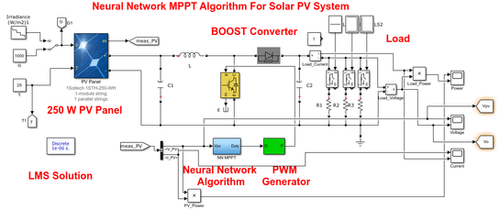
MATLAB Implementation of Neural Network Based MPPT for Solar PV System | LMS Solution
In this work, using an artificial neural network (ANN) for tracking of maximum power point is discussed. Error backpropagation method is used in order to train the neural network. The neural network has advantages of fast and precise tracking of maximum power point. In this method, neural network is used to specify the reference voltage of maximum power point under different atmospheric conditions. By properly controlling of dc-dc boost converter, tracking of maximum power point is feasible. To verify theory analysis, the simulation result is obtained by using MATLAB/SIMULINK.

MATLAB Implementation of Neural Network Based MPPT for Solar PV System
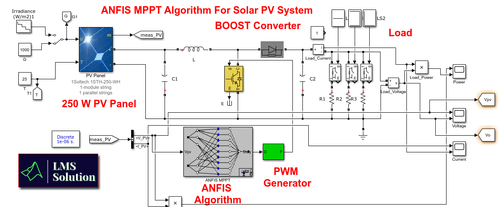
MATLAB Implementation of ANFIS Based MPPT for Solar PV System | LMS Solution
Maximum power point tracking (MPPT) techniques are a fundamental part in photovoltaic system design for increasing the generated output power of a photovoltaic array. Whilst varying techniques have been proposed, the adaptive neural-fuzzy inference system (ANFIS) is the most powerful method for an MPPT because of its fast response and less oscillation. However, accurate training data are a big challenge for designing an efficient ANFIS-MPPT. In this work, an ANFIS-MPPT method based on a large simulation training data is designed to avoid the system from experiencing a high training error. To evaluate the performance, the proposed ANFIS-MPPT method is simulated using a MATLAB/Simulink model for a photovoltaic system. The results reveal that the proposed method accurately tracks the optimized maximum power point whilst achieving efficiencies of more than 99.3%.
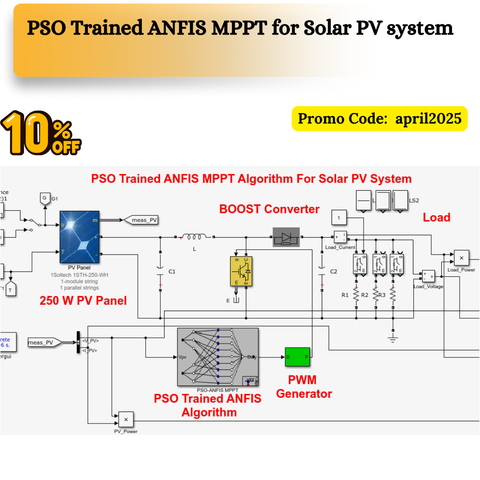
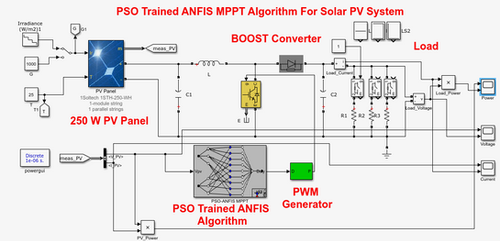
PSO Trained ANFIS MPPT for Solar PV system | LMS Solution Inter
In this Work, an ANFIS technique using experimental data is designed for predicting the maximum power point of a photovoltaic array. An ANFIS model training strategy is challenging due to the variations in the training and the operation conditions of a photovoltaic system. In order to improve ANFIS model accuracy, the Particle Swarm Optimisation (PSO) algorithm is utilized to find the best topology and to calculate the optimum initial weights of the ANFIS model. Hence, the dilemma between computational time and the best-fitting regression of the ANFIS model is addressed, as well as the mean squared error being minimized. To evaluate the proposed method, a MATLAB/Simulink model for an installed photovoltaic system is developed. The results show that the optimized feedforward ANFIS technique based on the PSO algorithm using real data predicts the maximum power point accurately.
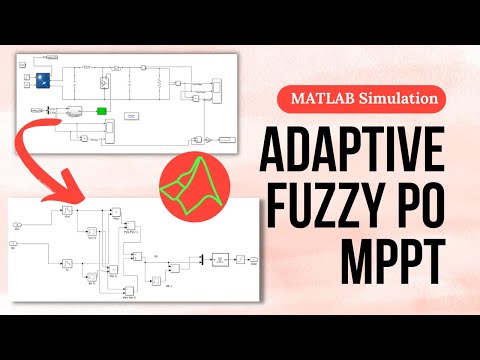
Adaptive Fuzzy PO MPPT For Solar PV System ( MPPT )
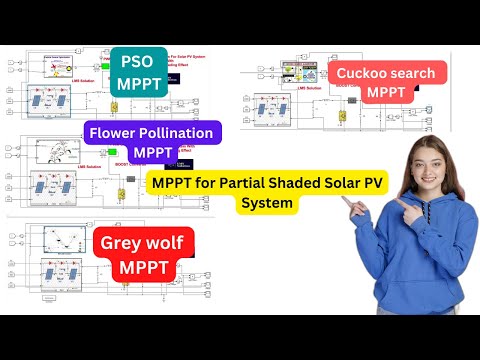
PSO, Cuckoo search, Flower Pollination and Grey wolf MPPT for Partial Shaded Solar PV System

MATLAB Implementation of Incremental Conductance MPPT for Solar PV System | LMS Solution Inter
MATLAB Implementation of Incremental Conductance MPPT for Solar PV System. It is work with MATLAB 2017b Version.
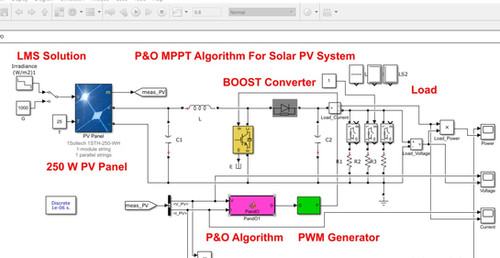
MATLAB -MPPT-PO-Solar PV System | LMS Solution Inter
MATLAB implementation of P&O MPPT for stand alone PV system.It is work with MATLAB 2017b version.

MATLAB Implementation of Flying Squirrel Search Optimization MPPT for Solar PV System

Hybrid PO-PSO MPPT for solar PV system | LMS Solution
Conventional maximum power point tracking (MPPT) methods such as the perturb-and-observe (P&O) method can only track the first local maximum point and stop progressing to the next maximum point. MPPT methods based on particle swarm optimization (PSO) have been proposed to track the global maximum point (GMP). However, the problem with the PSO method is that the time required for convergence may be long if the range of the search space is large. This work proposes a hybrid method, which combines P&O and PSO methods. Both the P&O method and PSO method work parallelly to find the GMP. The advantage of using the proposed hybrid method is that the search space for the PSO is reduced, and hence, the time that is required for convergence can be greatly improved. The excellent performance of the proposed hybrid method is verified by comparing it against the Conventional P&O, and PSO methods using MATLAB Simulation.













